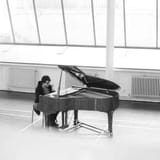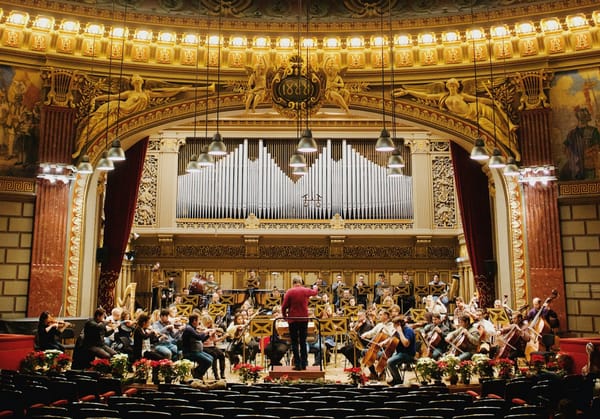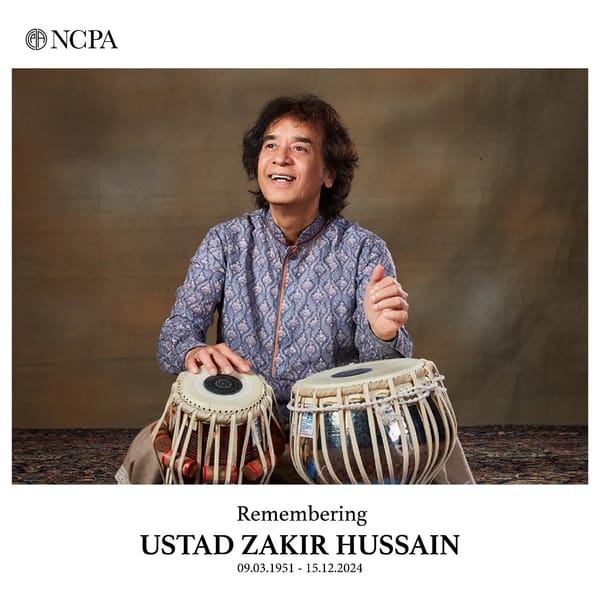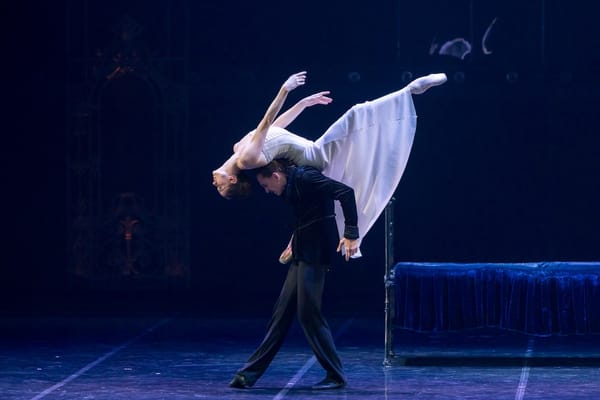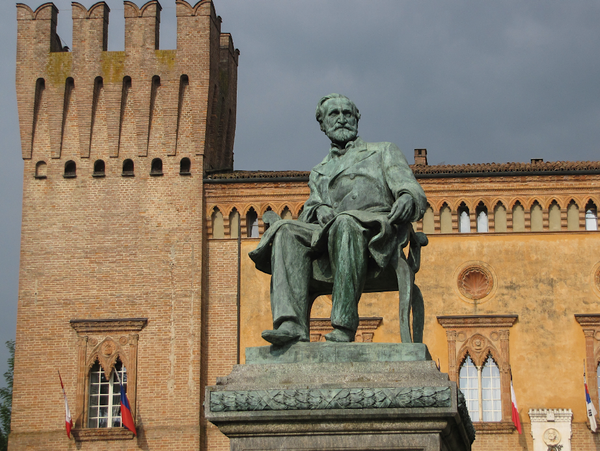Dariia Lytvishko: Illuminating the Organ’s Modern Voice
Ukrainian organist Dariia Lytvishko discusses her debut NAXOS album Toccatas and Meditations, the enduring allure of the French organ tradition, and how she bridges history, emotion, and innovation to bring the instrument to new audiences worldwide.

Ukrainian-born organist Dariia Lytvishko has swiftly established herself as one of Europe’s most captivating and sought-after young performers. Born in Lutsk, she now makes her home in Vienna, where she serves as organist at the Jesuit Church — a post that complements her flourishing international career. Her performances have graced some of the world’s most prestigious venues, from Westminster Abbey and St Paul’s Cathedral in London to the Pantheon in Rome and St Michael’s Church in Hamburg. In 2025, she marks an important milestone with the release of her debut NAXOS album, Toccatas and Meditations, a recording that reflects both her deep affinity for the French organ tradition and her gift for shaping music of striking emotional clarity. Beyond the concert stage, Lytvishko has devoted her artistry to humanitarian causes, raising nearly €70,000 through benefit concerts for Ukraine, while her vibrant social media presence continues to introduce the majesty of the organ to new audiences worldwide.
In this interview, Lytvishko speaks about the inspiration behind her debut recording, the creative challenges of interpreting such iconic repertoire, and her vision for bringing the organ into the modern cultural landscape. She also reflects on the personal meaning of performing in historic sacred spaces, her humanitarian work since the war in Ukraine, and the evolving role of digital media in connecting classical music with younger generations.

Nikhil Sardana: Your debut NAXOS album, Toccatas and Meditations, highlights the French organ tradition. What drew you to this repertoire for your first recording, and how did you approach shaping its interpretation?
Dariia Lytvishko: I’m a great admirer of French Romanticism and Impressionism. This music moves me deeply and evokes strong emotions. My decision to record this repertoire stems, first and foremost, from my profound passion for this magnificent tradition.
I find it offers a fascinating contrast: the toccatas — iconic works of the organ repertoire, such as Ravel’s Toccata from Le Tombeau de Couperin in its organ transcription — are full of energy and vitality, leaving no listener untouched. In contrast, the meditations invite reflection, relaxation, and calm.
It is precisely these opposites — energy and stillness, excitement and serenity — that feel so essential and sought after in today’s world. This music captures that duality in a truly profound way.

NS: The Widor Toccata is perhaps one of the most iconic works for organ. How do you balance the weight of tradition with your own artistic voice when performing such a cornerstone piece?
DL: Such well-known works are, of course, always under close scrutiny. At the same time, when performing music as popular as this, it’s important not to be overly influenced by expectations or comparisons. One has to learn to block all that out and find a personal connection to the work — without fear of criticism.
There are as many interpretations as there are performers. What truly matters is to enjoy the music, listen to yourself, and internalise it in your own unique way.
NS: Your album also includes a Ravel arrangement, an unusual but fascinating choice for organ. What excites you about adapting non-organ repertoire, and how does the organ transform the music?
DL: The organ is an absolutely incredible instrument with almost limitless sonic possibilities. Playing arrangements on it opens up a fascinating world of sound. These can range from solo pieces — like this Toccata, originally written for piano — to large orchestral works.
It’s an extraordinary feeling to perform an orchestral piece on the organ, to register it in such a way that you blend the colours and make the instrument sound like a full symphony orchestra — all by yourself. Experimenting with these sonorities is always exciting, especially since every organ is unique.
I especially wanted to include Ravel’s Toccata, as it’s one of my favourite works of all time — and, to be honest, it’s also my favourite track on the album.
NS: You’ve performed in some of the world’s most renowned venues. Is there one performance space that has left a particularly lasting impression on you, and why?
DL: That’s a difficult question to answer. I truly believe that performing in such historically and spiritually significant places changes you. Each of these spaces has its own unique energy — it’s like a feast for the soul.
One venue that left a particularly strong impression on me was St Paul’s Cathedral in London, where I had the honour of performing in September 2024. Another unforgettable experience was St Michael’s Church in Hamburg during the 2025 Hamburg Organ Summer. My parents and my partner were there — he’s a wonderful composer himself — and I performed the world premiere of his Good Year Anthem on that occasion.
It’s indescribable to share such spaces with my parents — to know that they can sit alone in these awe-inspiring buildings while I rehearse and experience their magic. For me, the most meaningful performances are those that combine a deeply personal connection with the grandeur of a historically significant place and an extraordinary instrument.
NS: Since the war in Ukraine began, you’ve dedicated yourself to humanitarian efforts through music. How has this experience shaped your relationship with your instrument and your audience?
DL: Since the war began, this work has given my artistic practice an entirely new meaning. I think all artists, at some point, ask themselves: “What is the purpose of all this?” I am no exception, and I’ve often wondered whether I had chosen the right path.
These benefit concerts have provided the answer. It has been, and continues to be, profoundly meaningful that I can use my music to help others. Of course, in the grand scheme of things, it’s just a drop in the ocean — but an ocean is made up of countless drops.
One person cannot save the world, certainly not as a musician alone. Yet we do have the ability to support people — in moments of acute crisis, and also mentally and emotionally in everyday life. For me, that is invaluable.

NS: You’re also highly active on social media, reaching hundreds of thousands of viewers. How do you see digital platforms influencing the future of classical organ performance and its accessibility to younger audiences?
DL: I think social media is an incredibly powerful tool in every sense. When it comes to organ performance, I see very positive developments: many of my colleagues now share a wide variety of content. It’s wonderful because it allows us to reach audiences that we might never reach through traditional, in-person concerts — and across all age groups.
I really enjoy combining digital and analogue formats, and it brings me a great deal of joy. Social media has become an important and meaningful part of my artistic life, and I’m deeply committed to using it actively.
NS: Having lived in Ukraine, Germany, and now Vienna, how have these cultural environments influenced your musical identity and approach to interpretation?
DL: I find it incredibly enriching. The more places and different people you experience, the more you learn about yourself as a person. Living in different cities and cultures has shaped me enormously — both as a human being and as a musician.
This begins with the different schools and musical approaches I’ve encountered — sometimes they complement each other beautifully, and sometimes they strongly contradict one another. That teaches you to develop your own perspective, which often requires courage, and to find a balance between these influences.
It also applies to everyday life: you learn to build things from scratch in new environments, to communicate and collaborate with people, and to manage many aspects of life in different languages. All of this has been personally enriching.

NS: Looking ahead, what directions do you hope to explore in your upcoming projects, both in repertoire and artistic vision?
DL: I want to continue bringing the organ closer to people and show just how incredibly cool, powerful, and versatile this instrument is — because it truly is, and I think those words describe it perfectly.
I’m also very drawn to projects that combine conventional and unconventional approaches. For me, it’s important to convey a message through music — a message that may evolve over time but remains ever-present. That, for me, is what gives my artistic work its true meaning.

